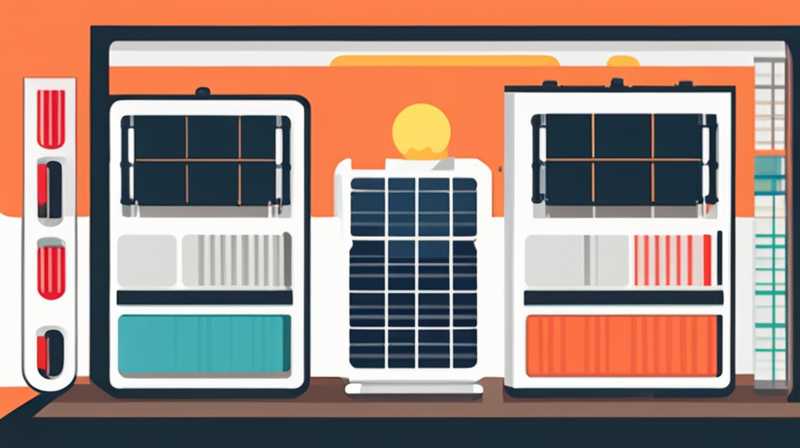
To effectively place solar tubes outside, begin by identifying an unshaded location with a direct line to sunlight, ensuring the installation angle corresponds to your geographic latitude for optimal performance. Select appropriate materials and tools for installation, maintain proper alignment and sealing of tubes, and secure the structures against environmental factors such as wind or precipitation. Consider local building regulations and obtain necessary permits before commencing work.
1. UNDERSTANDING SOLAR TUBES
Solar tubes, often referred to as tubular skylights, harness natural sunlight to illuminate indoor spaces. These innovative tubes channel sunlight through a reflective interior surface, enhancing the brightness of any room while reducing reliance on artificial lighting. The process involves capturing sunlight from the exterior, particularly crucial for remote structures or locations with limited daylight access. Understanding the fundamental operational principles of solar tubes is essential for any successful installation.
The composition of solar tubes typically includes a translucent dome mounted on the roof, which absorbs sunlight and directs it into a highly reflective aluminum tube. This tube channels the light into the interior space, often concluding with a diffuser, which disperses the incoming light uniformly throughout the room. Such systems have gained favor in eco-friendly living circles due to their energy-saving potential and minimal environmental footprint.
2. CHOOSING THE RIGHT LOCATION
Choosing an optimal spot for solar tube installation is crucial, as it directly affects the efficiency of sunlight capture. Areas with consistent exposure to direct sunlight, free from overhanging branches or nearby buildings that might cast shadows, should be prioritized. Conducting a sun path analysis can help identify ideal locations throughout different seasons of the year.
Moreover, it is vital to consider the angle of installation. The angle at which solar tubes are mounted should align with the geographical latitude to maximize sunlight absorption. For locations in northern hemispheres, a tilt that corresponds to their latitude can enhance light collection, especially during the winter months.
3. REQUIRED MATERIALS AND TOOLS
A thorough understanding of the necessary materials and tools is paramount for a successful installation of solar tubes outside. The primary components include the solar tube itself, a dome, flashing kit, and the interior diffuser. Depending on the roof type, additional materials such as sealing compounds or support brackets may also be required.
The tools needed for the installation process usually include safety gear (e.g., gloves, goggles), a measuring tape, a saw for cutting the roof, screws, and a level. Proper preparation ensures that obstacles are anticipated and mitigated against before starting the installation process.
4. INSTALLATION PROCEDURE
Commencing the installation requires precise planning, including measuring and marking the desired location on the roof. Begin by tracing the needed hole in the roofing material, ensuring the marked area has been assessed for structural integrity. Cut carefully to prevent damage to adjacent areas, as accuracy reduces the chances of leaks or structural compromise.
Once the hole is created, securely attach the flashing to create a waterproof barrier. The solar tube should be inserted into the hole and aligned correctly, followed by attaching the top dome and ensuring it is well-sealed. Throughout this stage, attention to detail is essential; imperfections may lead to inadequate insulation or premature system failure.
5. MAINTENANCE CONSIDERATIONS
To ensure the longevity and efficiency of installed solar tubes, regular maintenance is necessary. This might involve cleaning the dome to remove dirt and debris that could block sunlight, along with inspections to ensure seals remain intact. Dust and environmental factors can diminish efficiency over time if not addressed promptly.
Furthermore, an annual review of the installation can help identify potential issues before they escalate. Roof integrity and any changes in surrounding environments, such as newly grown trees or nearby structures, should also be checked.
FAQs
HOW DO SOLAR TUBES WORK?
The operation of solar tubes relies on daylight capture and channeling into interior spaces. Initially, light enters through a dome located on the roof, which collects direct sunlight. This light is reflected within the tube, allowing it to traverse considerable distances to the interior space. The final component, a diffuser, helps distribute the collected light evenly across the room, providing effective illumination.
WHAT ARE THE BENEFITS OF INSTALLING SOLAR TUBES?
Implementing solar tubes brings numerous benefits, chiefly reducing energy consumption associated with artificial lighting. By harnessing natural sunlight efficiently, they lend an eco-friendly alternative to conventional electrical illumination. Additionally, they can enhance aesthetics, creating a brighter environment that promotes well-being. Furthermore, these systems often require minimal maintenance and can lead to significant savings on energy bills over time.
CAN SOLAR TUBES BE INSTALLED IN ALL CLIMATES?
Yes, solar tubes are adaptable to various climates, although performance may vary with seasonal changes. Regions that experience prolonged periods of cloudiness may witness reduced efficiency during those intervals; however, solar tubes will still capture available sunlight. Systems can often be modified or reinforced based on specific environmental conditions to optimize functionality. Expert consultation during the installation process can ensure that these adjustments are made appropriately.
The successful installation of solar tubes outside requires meticulous attention to detail, beginning with precise planning and selection of the ideal location and materials. Knowledge of the proper angle can significantly influence performance, as considering the local environment ensures optimal sunlight capture. Additionally, employing the correct installation techniques and regularly maintaining the system enhances longevity and efficiency. Integrating solar tubes offers an eco-friendly way of improving interior lighting, reducing dependency on artificial sources and lowering energy bills. As this sustainable solution becomes more recognized, it paves the way for larger applications in energy efficiency and environmental stewardship. Proper understanding and implementation pave the way for the fruitful utilization of solar tubes, granting individuals and businesses alike an opportunity to impact the environment positively. Taking proactive measures toward installation and maintenance not only sustains these systems but also nurtures a culture of conscientious living. Embracing the light they provide signifies a step toward embracing a sustainable and environmentally-friendly lifestyle.
Original article by NenPower, If reposted, please credit the source: https://nenpower.com/blog/how-to-place-solar-tubes-outside/


